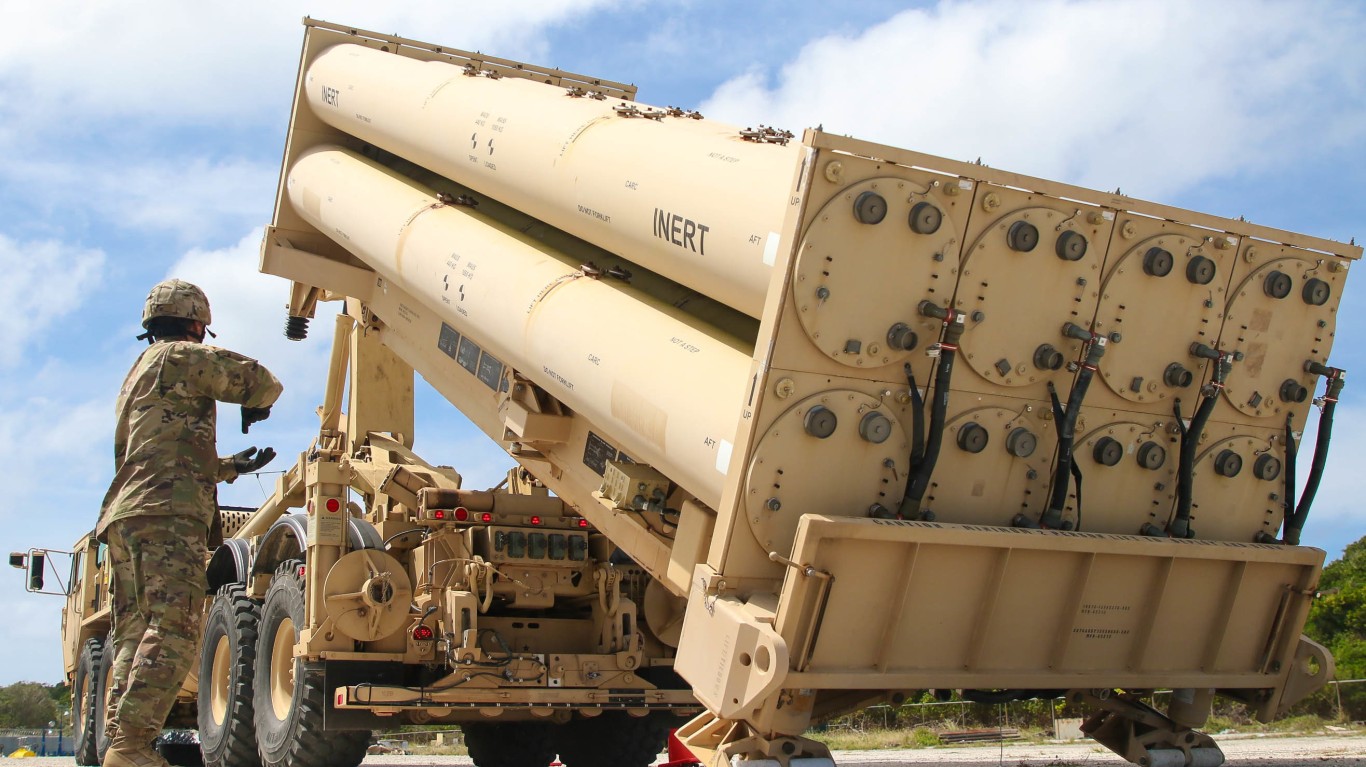
Shortly after Friday’s opening bell, the Dow Jones industrial average traded down 0.15%, while the S&P 500 traded up 0.25% and the Nasdaq Composite was up 0.77%.
[in-text-ad]
After U.S. markets closed Thursday, Netflix reported results that missed the profit estimate while narrowly beating on revenue. The big news was subscriber growth, the metric by which Netflix’s results are always judged. New paid subscribers totaled 7.7 million, well above the consensus estimate for 4.6 million additions and the company’s own guidance for new subscriptions of 4.6 million. Netflix also shuffled its top managers. Reed Hastings, co-founder and co-CEO, will become executive board chair, and Chief Operating Officer Greg Peters will join Ted Sarandos as co-CEO. The stock traded up about 7.6% shortly after Friday’s opening bell.
Before markets opened on Friday morning, Regions Financial reported beating both earnings per share (EPS) and revenue estimates, and it said the bank expects adjusted revenue growth of 8% to 10% in the new fiscal year. Shares traded up about 2.4%.
Schlumberger also reported better-than-expected EPS and revenue. The oilfield services giant also raised its quarterly dividend by 43% to $0.25, beginning with the April payment to shareholders of record on February 8. Shares traded up about 0.7% early Friday.
Ericsson missed the consensus EPS estimate but beat on revenue. The company is going to propose a dividend increase of 13% from an annualized $0.23 to $0.26. Shares traded down about 6.4% Friday morning.
First thing Monday morning, Baker Hughes and Synchrony Financial are on deck to report quarterly results.
Here is a look at five companies set to report quarterly results early Tuesday morning.
D.R. Horton
Homebuilder D.R. Horton Inc. (NYSE: DHI) has reversed a 12-month, 20% drop in its stock at the end of the September quarter, with shares now trading up nearly 2% over the past 12 months. The stock has added more than 35% since mid-October. Given the moribund housing market, however, analysts expect the builder to deliver weaker quarterly earnings and revenue than either the prior quarter or the year-ago quarter.
Of 22 brokerages covering the stock, 15 have a Buy or Strong Buy rating. Six more have the shares rated as a Hold. At a recent price of around $92.00 a share, the upside potential based on a median price target of $102.00 is about 10.9%. At the high price target of $135.00, the implied upside is 46.7%.
For the first quarter of fiscal 2023, revenue is forecast to total $6.43 billion, which would be down 33.3% sequentially and 8.9% lower year over year. Adjusted EPS are forecast at $2.26, down 51.7% sequentially and by 28.7% year over year. For the fiscal year that ends in September, EPS are forecast at $9.69, down 41.3%, on sales of $27.91 billion, down by 16.6%.
D.R. Horton stock trades at about 9.5 times expected 2023 EPS, 9.5 times estimated 2024 earnings of $9.74 and 8.5 times estimated 2025 earnings of $10.85 per share. The stock’s 52-week trading range is $59.25 to $97.32. The company pays an annual dividend of $1.00 (yield of 1.06%). Total shareholder return for the past year was 3.08%.
General Electric
Over the past 12 months, shares of General Electric Co. (NYSE: GE) have slipped by more than 23%. The shares dipped to their 52-week low in early July and have bounced more than 66% higher since. On January 3, GE spun off its Healthcare business into a new company, GE HealthCare Technologies Inc. (NASDAQ: GEHC), and GE shares have added 15.9%, and GE HealthCare shares have added 14.2% since the split. Following a spinoff of its energy businesses next year, GE will become solely an aerospace company.
[in-text-ad]
Analysts remain bullish on the stock. There are 16 Buy or Strong Buy ratings, along with five Hold ratings, among the 21 brokerages covering it. At a share price of around $76.90, the potential upside to a median price target of $85.00 is about 11.8%. At the high target of $110.00, the upside potential is about 43%.
Fourth-quarter revenue is forecast at $22.11 billion, up 15.9% sequentially and by 8.9% year over year. Adjusted EPS are forecast at $1.16, up more than 230% sequentially and by 26.1% year over year. For the full 2022 fiscal year, analysts expect GE to report EPS of $2.55, up 20.4%, on sales of $76.8 billion, up 3.5%.
GE stock trades at 30.1 times expected 2022 EPS, 31.3 times estimated 2023 earnings of $2.56 and 18.6 times estimated 2024 earnings of $4.13 per share. The stock’s 52-week range is $59.93 to $101.91, and GE pays an annual dividend of $0.32 (yield of 0.4%). Total shareholder return for the past 12 months was negative 1.7%.
Halliburton
Oilfield services firm Halliburton Co. (NYSE: HAL) has seen its share price rise by nearly 42% over the past 12 months. Since the beginning of the year, however, shares are up a modest 2.1%. Crude oil prices are down more than 3.5% over the past year, but China’s return to the world energy economy is expected to boost demand for oil, and Halliburton’s services, both onshore and off, will be in steady demand. That is the bull case, and most analysts are buying it.
Of 26 analysts covering the company, 24 have a Buy or Strong Buy rating, and the other two have Hold ratings. At a share price of around $40.20, the upside potential based on a median price target of $47.50 is about 18.7%. At the high target of $54.00, the implied gain is about 34%.
Fourth-quarter revenue is forecast to come in at $5.59 billion, up about 4.4% sequentially and by more than 30% year over year. Adjusted EPS are forecast at $0.65, up 11.7% sequentially and by 86.1% year over year. For the full 2022 fiscal year, analysts expect EPS of $2.10, up 94.7%, on sales of $20.3 billion, up 32.7%.
Halliburton stock trades at 19.1 times expected 2022 EPS, 13.6 times estimated 2023 earnings of $2.95 and 11.2 times estimated 2024 earnings of $3.57 per share. The stock’s 52-week range is $23.30 to $43.99, and the company pays an annual dividend of $0.48 (yield of 1.18%). Halliburton’s total shareholder return for the past year was 43.6%.
Lockheed Martin
Over the past 12 months, shares of Lockheed Martin Corp. (NYSE: LMT) have added about 16.4%, but they are down more than 10% since posting a 52-week high in early December. For fiscal 2024, newly-elected Speaker Kevin McCarthy agreed to demands from fellow Republicans that tie an increase in the U.S. debt ceiling to cuts in discretionary spending and, more important to the Pentagon, a cap on the 2024 defense budget at the same level as fiscal 2022, about $75 billion below the 2023 level. For Lockheed, which derived about 96% of its 2021 revenue from Pentagon business, this is a big deal.
Just seven of 22 brokerages have a Buy rating on Lockheed Martin stock, compared to 11 that have Hold ratings. At a price of around $439.30 a share, the upside potential based on a median price target of $502.00 is 14.3%. At the high price target of $759.00, the upside potential is 72.8%.
[in-text-ad]
Fourth-quarter revenue is forecast at $18.25 billion, up about 10.1% sequentially and nearly 3% higher year over year. Adjusted EPS are expected to come in at $7.37, up 7.2% sequentially and by 1.8% year over year. For the full 2022 fiscal year, Lockheed is expected to post EPS of $26.99, down 1.8%, on sales of $65.24 billion, down 2.7%.
The stock trades at 16.3 times expected 2022 EPS, 16.4 times estimated 2023 earnings of $26.83 and 15.6 times estimated 2024 earnings of $28.16 per share. The stock’s 52-week range is $365.34 to $498.95, and the annual dividend is $12.00 (yield of 2.72%). Total shareholder return over the past 12 months was almost 20%.
Raytheon
Defense contractor Raytheon Technologies Corp. (NYSE: RTX) has seen its share price increase by 4.5% over the past 12 months. Since the beginning of 2023, the stock is down 7.2%. Investors’ concerns over possible cuts to the defense budget are hitting Raytheon, which derived nearly two-thirds of its revenue from Pentagon contracts in 2021, this is just as big a deal as it is for Lockheed. What may help Raytheon through a rough patch is its position as a top supplier of missile systems that are taking on a larger role in Ukraine and are important to Taiwan’s defenses.
Of 23 analysts covering the stock, 13 have a Buy or Strong Buy rating and the other 10 rate it at Hold. At a share price of around $94.00, the upside potential based on a median price target of $107.00 is 13.8%. At the high price target of $120.00, the upside potential is 27.7%.
Analysts expect Raytheon to report fourth-quarter revenue of $18.17 billion, up 7.2% sequentially and by 6.5% year over year. Adjusted EPS are expected to reach $1.25, up almost 3% sequentially and 15.7% higher year over year. For the full 2022 fiscal year, EPS is pegged at $4.75, up 11.2%, on revenue of $67.15 billion, up 4.3%.
Raytheon stock trades at 19.8 times expected 2022 EPS, 18.6 times estimated 2023 earnings of $5.05 and 15.7 times estimated 2024 earnings of $5.98 per share. The stock’s 52-week range is $80.27 to $106.02. Raytheon pays an annual dividend of $2.20 (yield of 2.33%). Total shareholder return over the past 12 months was 8.8%.
It’s Your Money, Your Future—Own It (sponsor)
Retirement can be daunting, but it doesn’t need to be.
Imagine having an expert in your corner to help you with your financial goals. Someone to help you determine if you’re ahead, behind, or right on track. With SmartAsset, that’s not just a dream—it’s reality. This free tool connects you with pre-screened financial advisors who work in your best interests. It’s quick, it’s easy, so take the leap today and start planning smarter!
Don’t waste another minute; get started right here and help your retirement dreams become a retirement reality.
Thank you for reading! Have some feedback for us?
Contact the 24/7 Wall St. editorial team.

 24/7 Wall St.
24/7 Wall St.



